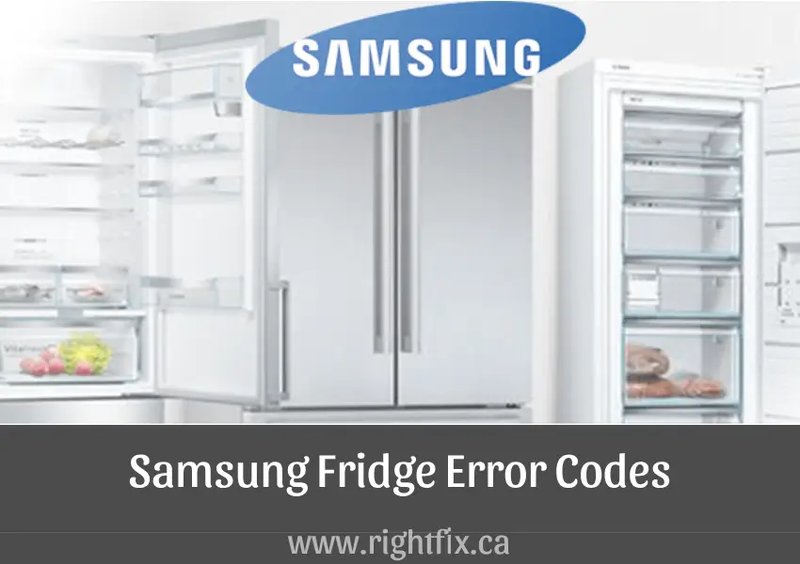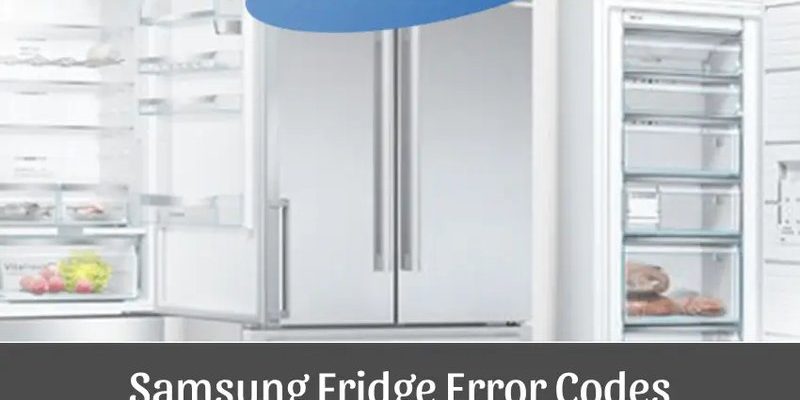
Imagine your refrigerator as a team member trying to keep things cool (literally). When it flashes the “Oe” code, it’s like it’s raising its hand to say there’s an issue that needs some attention. The “Oe” error code specifically relates to a problem with the refrigerator’s cooling system, often implying issues with water or ice dispensation. So, should you turn a blind eye and hope it resolves itself, or is it time to spring into action? Let’s delve deeper to find the answers.
Understanding the “Oe” Error Code
You might be wondering, “Why does this even happen?” Well, the “Oe” error code is your Samsung refrigerator’s way of signaling that something might be off with its water inlet or ice maker systems. In simple terms, it’s like when a car’s dashboard light comes on to tell you something’s up under the hood. Usually, this code indicates an ice maker error or a problem with water flow. This could be due to anything from a clogged water filter to a kinked water line.
Picture trying to fill a cup with water from a garden hose. If there’s a kink in the hose, or it’s clogged, the water’s not going to flow right, is it? Similarly, your refrigerator needs a smooth water flow to operate correctly. When it doesn’t, the fridge sends up an “Oe” flare to draw your attention. Ignoring it is like ignoring that garden hose issue; it’s going to impact your fridge’s performance over time.
Think of this code as less of a nuisance and more of a friendly nudge from your fridge. By addressing it, you ensure the appliance can keep performing at its best. Letting it slide could lead to bigger headaches down the line, like malfunctioning ice makers or insufficient cooling.
Common Causes of the “Oe” Error Code
So, what’s causing this hiccup? One common culprit is a blocked or frozen water line, which can happen if the refrigerator door is left open or if the freezer temperature is set too low. Just like how a traffic jam holds up cars, a frozen line stops water from reaching its destination.
Another usual suspect is the water filter, which can become clogged over time with impurities. If it’s been a while since your last filter change, it might be time to swap it out. Think of the filter as a security guard for your water flow—when it’s clogged, nothing gets through.
A less common, but possible cause is a defective inlet valve. This valve acts like a gatekeeper, controlling the water that enters the ice maker. If it’s broken or malfunctioning, you can bet it’s going to cause some trouble.
To address these issues, start simple: check your water line for kinks and replace the filter if needed. If the problem persists, it might be time to call in a professional.
Consequences of Ignoring the “Oe” Code
What happens if you dismiss this code? Well, it’s like leaving a leaky faucet unattended. Over time, water leaks can lead to significant damage. Similarly, ignoring the “Oe” code can lead to bigger problems, such as poor ice production or even water leaks inside the fridge. These issues can not only be inconvenient but also expensive to fix.
Additionally, a malfunctioning water or ice system can affect your fridge’s overall efficiency. Imagine trying to run a marathon with a pebble in your shoe; it’s a drag on performance. Your fridge will work harder, potentially increasing energy consumption and decreasing its lifespan.
Furthermore, unaddressed issues could escalate to more serious, systemic failures in your refrigerator. So, while it might seem like a minor inconvenience now, addressing it promptly can prevent more significant problems and keep your fridge running smoothly.
Proactive Steps and Preventative Measures
Now that you’re armed with knowledge, what should you do next? First, make sure to regularly check and maintain your refrigerator’s components, like the water filter and lines, to prevent future issues. Think of it as routine check-ups to keep everything in tip-top shape.
Clear any obstructions in your water lines and keep an eye on your filter replacement schedule. A good rule of thumb is to replace the water filter every six months, or more often if you notice any decrease in water flow or odd tastes.
If the problem looks complex or if you’re unsure about tackling it yourself, don’t hesitate to contact a professional. Sometimes, getting expert help can save you time and prevent potential hazards.
In conclusion, while the “Oe” error code may seem intimidating, it’s actually a helpful indicator that something needs your attention. By addressing it promptly and maintaining regular check-ups on your appliance, you can enjoy peace of mind and ensure that your Samsung refrigerator stays in great working order for years to come.
